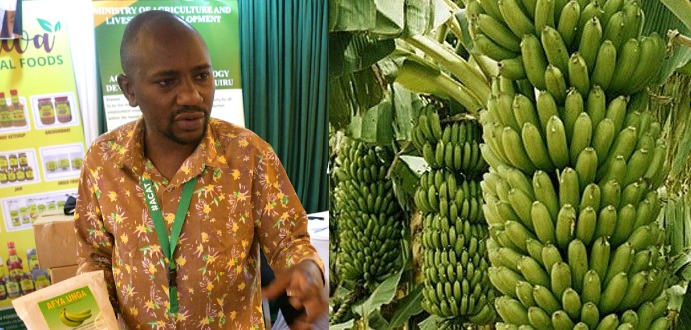|
Getting your Trinity Audio player ready...
|
Banana farming is one of the widely practiced crop farming in Kenya, with a section of farmers in the Central part of Kenya and Nyanza region relying on the venture as their economic mainstay.
The high number of farmers practicing banana farming has seen the fruit’s market value decline tremendously, especially in areas where the venture is widely practiced.
As such, farmers make low profits, with others making massive losses given the little money the fruit fetches in the market.
Some farmers have, however, discovered a way of boosting their earnings by adding value to bananas.
Stephen Mutuanga, chairman of Healthy Life Juices group, an Embu-based agricultural group, says adding value to bananas not only reduces post-harvest loss but also increases the shelf life of green bananas.
Mutuanga and his team diverted to adding value to fruits after their juice production business failed. They make whole green banana flour, which he says increases the shelf life of green banana from less than five days to about eight months for the flour.
“We decided to shift to adding value to cassava, groundnuts, pumpkin, green banana and millet by making flour,” he said.
Tissue Culture Banana Farming in Kenya, a Technique Making Farmers Successful
“We were trained on value addition on some of these products to not only reduce post-harvest losses but also to increase the shelf life of the produce,” he added noting they were trained at the Agricultural Technology Development Centre in Ruiru, Kiambu county.
From the farm, the bananas are weighed washed, and then the tips are removed before they are sliced. Slicing makes it easier to dry them easier.
They are then dried for about eight hours. Mutuanga notes that one can dry 200 to 1,000 kilos of bananas depending on the size of the solar drier.
The fruits are then milled and should have a moisture content of 11 percent before they are crushed to avoid aflatoxin and other food contamination.
“We were trained on the Hazard Critical Control Points, which ensures cleanliness of the final product. The moisture level should be right to avoid aflatoxin and any other food contamination.” Mutuanga said.
“We also ensure the right packaging to increase the shelf life of the produce to about eight months,” he added.
Admitting the scarcity of markets for their produce, Mutuanga said they sell their produce to the local market, with a kilo of whole green banana flour selling at Sh1,000 while a 500g package selling at Sh500.








